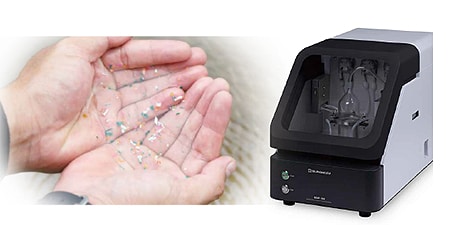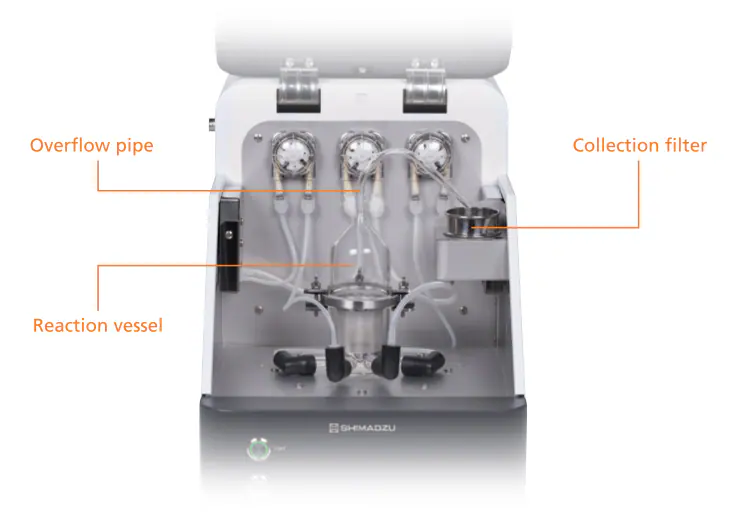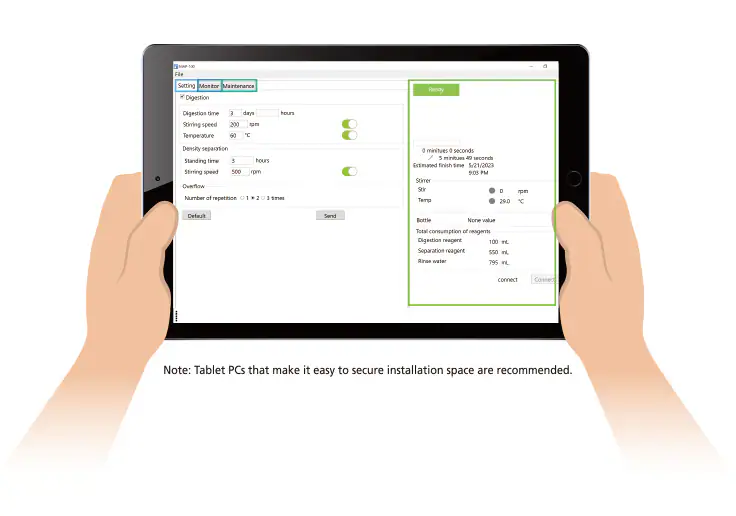MAP-100
Microplastic automatic preparation device
This automatic preparation device isolates microplastics contained in environmental surface water.

The presence of microplastics in environmental surface water such as oceans, rivers, and lakes has attracted international attention as an environmental problem, and many monitoring results have been reported.
The analysis of microplastics requires multiple steps, including sample collection, digestion and filtration, and qualitative and quantitative (size, number of particles, mass or concentration) analysis.
To accurately analyze microplastics in aqueous samples, an essential step is to isolate the particles from other components in the sample. This process normally involves digestion and separation steps.
The MAP-100 automates the typical steps needed to isolate microplastics. This improves the reproducibility of the analytical workflow, enables lab technicians to focus on other tasks, and makes handling of reagents safer.
Labor savings
Automating the complicated preparation process significantly reduces the number of man-hours required.
Reproducibility
Manual tasks by the operator are reduced, enabling highly reproducible preparation.
This improves accuracy when comparing data across analysts and laboratories.
Safety
Simplified handling of reagents by operators.
Features
-
The sample collected from the environmental surface water is placed inside the reaction vessel in the automatic preparation device. The control software is...
-
The operator configures the conditions for the automated preparation process in the simple software window. The progress during preparation is...




